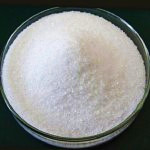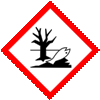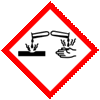 |
King of Chemicals Manufacturers |
Specifications, Properties, Uses, SDS of Thymol USP NF BP Ph Eur IP EP JP Food Grade Manufacturer Supplier Exporter Wholesale & Small Packs, CAS Number 89-83-8. |
|
| King of Chemicals has several associated companies having accreditations like cGMP, GLP - FDA Approved Good Manufacturing Practice and Good Laboratory Practice of WHO standard, ISO-9001, ISO-14001, ISO/IEC 17025, ISO ISO-45000, HACCP, FSSC 220000, FSSAI, "REACH" Registered, Kosher & Halal Certified. e-CTD and DMF support can be made available if needed. We offer USP NF BP Ph Eur EP IP JP Analytical Reagent FCC Food Grade Chemicals & Nutraceuticals. | |
        |
|
Muby Chem Pvt. Ltd. is a several decades old group of companies, engaged in manufacturing, supplying, distributing, wholesale supplies of Thymol USP NF BP Ph Eur IP EP JP Food Grade for actual users, including retail or small pack supplies for research and development work.
We supply fine and speciality chemicals, pharmaceutical excipients, mineral fortifiers in chemically pure, analytical reagent grade, IP BP USP Ph Eur EP JP and other pharmaceutical grade monograph including FCC Food grade chemicals and Nutraceuticals at best prices. We and/or our associated units have all the facilities to supply as per cGMP standard observing good manufacturing practice and good laboratory practice. We can assure low microbial count and also offer a test certificate for the same. We maintain warehouses across USA, India, and UAE. Our group exports to USA, Canada, Mexico, Argentina, Brazil, Chile, Korea, Malaysia, Thailand, Indonesia, Europe, and several other parts of the world. We supply in wholesale container loads to small pack of few grams. Solid products may be specified for it size and shape as desired by the buyer.









Thymol CAS Number 89-83-8
For Properties Specifications Uses of Thymol Click Properties, Specifications, Uses, Price, Process of Thymol Manufacturer.
For For SDS MSDS Sheet of Thymol Click SDS Safety Data Sheet MSDS Sheet of Thymol Manufacturer.
The Properties, Specifications, Monograph and Uses of Thymol:
CAS Number: 89-83-8, EINECS EC Number: 201-944-8, Molecular Formula: C10H14O, Molecular Weight: 150.22, FEMA Number: 3066, HS Code 29071990 29071930
Thymol also known as 2-isopropyl-5-methylphenol, IPMP is a natural monoterpenoid phenol derivative of p-Cymene, C10H14O. Thymol has been used in alcohol solutions and in dusting powders for the treatment of tinea or ringworm infections. Thymol can also be used as a medical disinfectant and general purpose disinfectant. It is also used as a preservative in halothane, an anesthetic, and as an antiseptic in mouthwash. Thymol is also the active antiseptic ingredient in some toothpastes.
Thymol USP NF Grade Specifications:
C10H14O --- 150.22
Phenol, 5-methyl-2-(1-methylethyl)-;
Thymol;
p-Cymen-3-ol --- CAS 89-83-8
DEFINITION
Thymol contains NLT 99.0% and NMT 101.0% of thymol (C10H14O).
IDENTIFICATION
A. Infrared Absorption
B. It meets the requirements in Melting Range or Temperature.
ASSAY
Procedure
Sample: 100 mg
Titrimetric system
Mode: Direct titration
Titrant: 0.1 N bromine
Endpoint detection: Visual
Analysis: Transfer the Sample to a 250-mL iodine flask, and dissolve in 25 mL of 1 N sodium hydroxide. Add 20 mL of hot dilute hydrochloric acid (1 in 2), and immediately titrate with Titrant to within 1 to 2 mL of the calculated endpoint. Warm the solution to between 70C and 80C, add 2 drops of methyl orange and continue the titration slowly, swirling vigorously after each addition. When the color of the methyl orange is bleached, add 2 drops of Titrant, shake for 10 s, add 1 drop of methyl orange and shake vigorously. If the solution is red, continue the titration, dropwise and with shaking, until the color is discharged. Repeat the alternate addition of the Titrant and methyl orange until the red color is discharged after the addition of the methyl orange. Each mL of Titrant is equivalent to 3.755 mg of thymol (C10H14O).
Acceptance criteria: 99.0% to 101.0%
Sample: 2 g
Analysis: Volatilize the Sample on a steam bath, and dry at 105C to constant weight.
Acceptance criteria: NMT 0.05%
Melting Range or Temperature: 48C to 51C; but when melted, Thymol remains liquid at a considerably lower temperature.
Packaging and Storage: Preserve in tight, light-resistant containers.
Thymol BP Ph Eur Grade
C10H14O --- 150.2 --- 89-83-8
DEFINITION
5-Methyl-2-(methylethyl)phenol.
CHARACTERS
Appearance: Colourless crystals.
Solubility: Very slightly soluble in water, very soluble in ethanol (96 per cent), freely soluble in essential oils and in fatty oils, sparingly soluble in glycerol. It dissolves in dilute solutions of alkali hydroxides.
IDENTIFICATION
First identification: B
Second identification: A, C, D
A. Melting point: 48C to 52C.
B. Infrared absorption spectrophotometry.
C. Dissolve 0.2 g with heating in 2 mL of dilute sodium hydroxide solution and add 0.2 mL of chloroform. Heat on a water-bath. A violet colour develops.
D. Dissolve about 2 mg in 1 mL of ;anhydrous acetic acid. Add 0.15 mL of sulfuric acid and 0.05 mL of nitric acid. A bluish-green colour develops.
TESTS
Appearance of solution: The solution is not more opalescent than reference suspension and not more intensely coloured than reference solution.
Dissolve 1.0 g in 10 mL of dilute sodium hydroxide solution.
Acidity: To 1.0 g in a 100& mL glass-stoppered conical flask add 20 mL of water. Boil until dissolution is complete, cool and stopper the flask. Shake vigorously for 1 min. Add a few crystals of the substance to be examined to initiate crystallization. Shake vigorously for 1 min and filter. To 5 mL of the filtrate add 0.05 mL of methyl red solution and 0.05 mL of 0.01 M sodium hydroxide. The solution is yellow.
Related substances: To pass the test by gas chromatography.
Residue on evaporation: Maximum 0.05 per cent.
STORAGE
Protected from light.
We also manufacture Thymol EP JP IP Grade.
Specifications of Thymol Food Grade:
Appearance (Color): White
Appearance (Form): Powder or Crystals
Initial Melting Point: >_ 49C
Final Melting Point: <_ 51C
Infrared spectrum: Conforms to Structure
Purity (GC): >_ 99.0 %
Solubility (Turbidity): Clear to Very Slightly Hazy in 1gm/1ml 95% Ethanol
Solubility (Color): Colorless
Arsenic (As): <_ 3.0 ppm
Cadmium (Cd): <_ 1.0 ppm
Mercury (Hg): <_ 1.0 ppm
Lead (Pb): <_ 10.0 ppm.
The MSDS-SDS Hazard Statement of Thymol:
Thymol SDS, Safety Data Sheet
MSDS, Material Safety Data Sheet 08-Aug-21
1. Product Identification
Product Name & Other Names: Thymol, 2-isopropyl-5-methylphenol, IPMP, 5-Methyl-2-(methylethyl)phenol
CAS No.: 89-83-8
EINECS EC-No.: 201-944-8
FEMA Number: 3066
Molecular Weight: 150.22
Chemical Formula: C10H14O
Relevant uses and uses advised against (if any): Industrial Manufacturing.
Suppliers: As per letterhead.
2. Hazards Identification
GHS, Globally Harmonized System Classification in accordance with 29 CFR 1910
Classification according to Regulation (EC) No 1272/2008
Acute toxicity, Oral Category 4, H302
Skin corrosion/irritation Category 1A, B, C, H314
Hazardous to the aquatic environment, long-term hazard Category 1, H411
Labeling according to GHS & Regulation (EC) No 1272/2008
GHS Label Elements  Aquatic Toxicity |
GHS Label Elements |
Signal Words: Danger
Hazard statements:
H302: Harmful if swallowed.
H314: Causes severe skin burns and eye damage.
H411: Toxic to aquatic life with long lasting effects.
Precautionary statements:
P262: Do not get in eyes, on skin, or on clothing.
P264: Wash skin thoroughly after handling.
P270: Do not eat, drink or smoke when using this product.
P272: Contaminated work clothing should not be allowed out of the workplace.
P273: Avoid release to the environment.
P280: Wear protective gloves/protective clothing/eye protection/face protection.
P330: Rinse mouth
P301+P312: IF SWALLOWED: Call a POISON CENTER or doctor/physician if you feel unwell.
P303+361+353: IF ON SKIN (or hair): Remove/Take off immediately all contaminated clothing. Rinse skin with water/shower.
P305+P351+P338: IF IN EYES: Rinse cautiously with water for several minutes. Remove contact lenses, if present and easy to do. Continue rinsing.
P314: Get Medical advice/attention if you feel unwell.
P301+330+331: IF SWALLOWED: Rinse mouth. Do NOT induce vomiting.
P332+P313: If skin irritation occurs: Get medical advice/attention.
P337+P313: If eye irritation persists: Get medical advice/ attention.
P360: Rinse immediately contaminated clothing and skin with plenty of water before removing clothes.
P391: Collect spillage.
P501: Dispose of contents/ container to an approved waste disposal plant.
3. Composition/Information on Ingredients
Product Name & Other Names: Thymol, 2-isopropyl-5-methylphenol, IPMP, 5-Methyl-2-(methylethyl)phenol.
CAS No.: 89-83-8
EINECS EC-No.: 201-944-8
FEMA Number: 3066
4. First Aid Measures
Always seek medical attention after first aid measures are provided.
Inhalation: Remove to fresh air. If not breathing, give artificial respiration. If breathing is difficult, give oxygen. Get medical attention.
Ingestion: Never give anything by mouth to an unconscious person. Get medical attention.
Skin Contact: Wipe off excess material from skin then immediately flush skin with plenty of water for at least 15 minutes. Remove contaminated clothing and shoes. Get medical attention. Wash clothing before reuse. Thoroughly clean shoes before reuse.
Eye Contact: Immediately flush eyes with plenty of water for at least 15 minutes, lifting lower and upper eyelids occasionally. Get medical attention immediately.
5. Fire Fighting Measures
Flammability of the Product: Non-flammable. However, it may burn at high temperature.
Products of Combustion: Carbon oxides.
Fire Extinguishing Media: Use any means suitable for extinguishing surrounding fire. Use water spray, alcohol-resistant foam, dry chemical, or carbon dioxide.
Special Information: In the event of a fire, wear full protective clothing and NIOSH-approved self-contained breathing apparatus with full face piece operated in the pressure demand or other positive pressure mode. At high temperatures under fire conditions, it may produce toxic or irritating fumes. Fire-extinguishing work is done from the windward and the suitable fire-extinguishing method according to the surrounding situation is used. Uninvolved persons should evacuate to a safe place.
6. Accidental Release Measures
Personal precautions, protective equipment, and emergency procedures: Avoid breathing dust/fumes/gas/mist/vapors/spray. Use individual protective equipment (waterproof boots, suitable protective clothing, safety glasses, etc.). Restrict unprotected personnel from the area. Prevent any contact with hot surfaces. Do not approach facing the wind. Do not touch the spilled material.
Environmental precautions: Do not let the product enter drains, soil, or water sources.
Methods and materials used for containment cleanup procedures and Storage:
Small Spill: Avoid dust formation. Avoid breathing dust. Ensure adequate ventilation. Use appropriate tools to put the spilled solid in a convenient waste disposal container. Finish cleaning by spreading water on the contaminated surface and dispose of according to local and regional authority requirements.
Large Spill: Avoid touching the spilled material. Do not let the product enter drains. Use a shovel to put the material into a convenient waste disposal container. Do not contaminate the environment.
7. Handling and Storage
Precautions for safe handling: Apply according to good manufacturing and industrial hygiene practices. Ensure proper ventilation. In case of insufficient ventilation, wear suitable respiratory equipment. Wash thoroughly after handling. Do not drink, eat, or smoke while handling. Do not ingest. Avoid contact with skin, eyes, and clothing. Minimize dust generation. Avoid breathing dust/fumes/gas/mist/vapors/spray. Avoid contact with eyes, skin, and clothing. Keep container tightly closed. Avoid ingestion and inhalation. Use individual protective equipment (waterproof boots, suitable protective clothing, safety glasses, etc.). Prevent any contact with hot surfaces.
Conditions for safe storage, including any incompatibilities: Store in cool, dry, and ventilated area away from heat sources and protected from sunlight in tightly closed original container. Keep air contact to a minimum. Do not leave the material container open. Store protected from heat, sparks and ignition sources and incompatible materials. Avoid contact with skin and eyes. Avoid inhalation of dust/mist/vapor. Do not store with incompatible materials like strong oxidizing agents. Moisture sensitive.
8. Exposure Controls/Personal Protection
Airborne Exposure Limits: This product, as supplied, does not contain any hazardous materials with occupational exposure limits established by the region-specific regulatory bodies.
Ventilation System: A system of local and/or general exhaust is recommended to keep employee exposures as low as possible. Local exhaust ventilation is generally preferred because it can control the emissions of the contaminant at its source, preventing dispersion of it into work area.
Personal Respirators (NIOSH Approved): For conditions of use where exposure to dust or mist is apparent and engineering controls are not feasible, a particulate respirator may be worn. For emergencies or instances where the exposure levels are not known, use a full-face positive-pressure, air-supplied respirator.
Skin Protection: Wear protective gloves and clean body-covering clothing.
Eye Protection: Use chemical safety goggles and/or full-face shield where dusting or splashing of solutions is possible. Maintain eye wash fountain and quick-drench facilities in work area.
Other Control Measures: Maintain good housekeeping in work area. Dust deposits on floors and other surfaces may pick up moisture and cause the surfaces to become slippery and present safety hazards. Handle in accordance with good industrial hygiene and safety practice.
9. Physical and Chemical Properties
Appearance: It is white or colorless crystalline powder.
Odor: characteristic.
Odor threshold: Not available.
pH: 5-7 @ 0.8 g/l
Relative Density: 0.97 g/mL at 20C (68F)
Boiling Point: 233C - lit.
Flash point: 104C
Melting Point: 49 - 51C.
Auto-ignition temperature: Not available.
Decomposition temperature: Not available.
Upper/lower flammability or explosive limits: Not available.
Vapor pressure: Not available.
Vapor density: Not available.
Evaporation rate: Not available.
Flammability (solid, gas): Not available.
Partition coefficient: n-octanol/water: Not available.
Solubility: It is slightly soluble in water.
Viscosity: Not available.
Molecular Weight: 150.22
Chemical Formula: C10H14O
10. Stability and Reactivity
Stability: Stable under ordinary conditions of use and storage.
Hazardous Decomposition Products: It emits carbon oxides and toxic fumes when heated to decomposition.
Hazardous Polymerization: Will not occur.
Incompatibilities: Strong oxidizing agents.
Conditions to Avoid: Incompatibles and heat.
11. Toxicological Information
Toxicity data:
LD50 Oral - Rat - male and female - 980 mg/kg(Thymol)
LD50 Dermal - Rat - male and female - > 2,000 mg/kg
Carcinogenic Effects: No component of this product present at levels greater than or equal to 0.1% is identified as probable, possible, or confirmed human carcinogen by IARC, ACGIH, NTP, OSHA.
Mutagenic Effects: Not available.
Developmental Toxicity: Not available.
Reproductive Effects: No information available.
12. Ecological Information
Toxicity to fish: LC50 - Oryzias latipes - 4.7 mg/l - 96.0 h
Toxicity to daphnia and other aquatic invertebrates: Immobilization LC50 - Daphnia magna (Water flea) - 4.5 mg/l - 48 h.
Environmental Fate: Readily degradable.
Results of PBT and vPvB assessment: This substance/mixture contains no components considered to be either persistent, bioaccumulative and toxic (PBT), or very persistent and very bioaccumulative (vPvB) at levels of 0.1% or higher.
13. Disposal Considerations
Whatever cannot be saved for recovery or recycling should be managed in an appropriate and approved waste disposal facility. Processing use or contamination of this product may change the waste management options. State and local disposal regulations may differ from federal disposal regulations. Dispose of container and unused contents in accordance with law.
14. Transport Information
Land Transport DOT USA, TDG Canada & ADR/RID Europe:
UN number: 2430 Class: 8 Packing group: III
Proper shipping name: ALKYLPHENOLS, SOLID, N.O.S. (THYMOL)
Sea Transport IMDG/IMO:
UN number: 2430 Class: 8 Packing group: III
Proper shipping name: ALKYLPHENOLS, SOLID, N.O.S. (THYMOL)
Air Transport IATA/ICAO:
UN number: 2430 Class: 8 Packing group: III
Proper shipping name: ALKYLPHENOLS, SOLID, N.O.S. (THYMOL)
15. Regulatory Information
USA:
SARA 311/312 Hazards: Acute Health Hazard, Chronic Health Hazard
California Prop. 65 Components: This product does not contain any chemicals known to State of California to cause cancer, birth defects, or any other reproductive harm.
16. Other Information
DISCLAIMER: The information and recommendations set forth herein are presented in good faith and believed correct as of the date hereof. It is compiled from various sources, and it is not necessarily all inclusive nor fully adequate in every circumstance. In addition, these suggestions should not be confused with nor followed in violation of applicable laws, regulations, rules, or insurance requirements applicable. This SDS MSDS sheet is intended only as a guide to the appropriate precautionary handling of the material by a professionally trained person using this product. Individuals receiving the information must exercise their independent judgment in determining its appropriateness for a particular purpose. This shall not constitute a guarantee for any specific product features and shall not establish a legally valid contractual relationship. In no case shall our company be liable to loss or damages by the product user.
Thymol Manufacturers, Suppliers, Exporters, Wholesalers:
King of Chemicals manufacturers

Plot No. 2900/46&47 + 2900/163to167, GIDC, Ankleshwar, Dist. Bharuch, India
India, USA, UAE
TEL: (Office) 91-22-23774610, 91-22-23723564
e-mail: info@kingofchemicals.com
Copyright and Usual Disclaimer is Applicable --- April 7, 2025
If I give you “My Word” Nobody can undo it.
If I sign an “Agreement” my Lawyer will undo it
Our products are for industrial and laboratory use only. The user must test the material before use. We are not dispensing chemists or druggist and do not offer over the counter type (OTC) products for medical use by individuals. Check.
We and our associates manufacture pure chemicals surpassing Monograph Specifications of Analytical Reagent Standards, British & European Pharmacopoeia BP Ph Eur EP Standard, US Pharmacopoeia USP NF Standard, Indian Pharmacopoeia IP Standard, Japan Pharmacopoeia JP Standard, FCC Food Grade Standard. |
|
